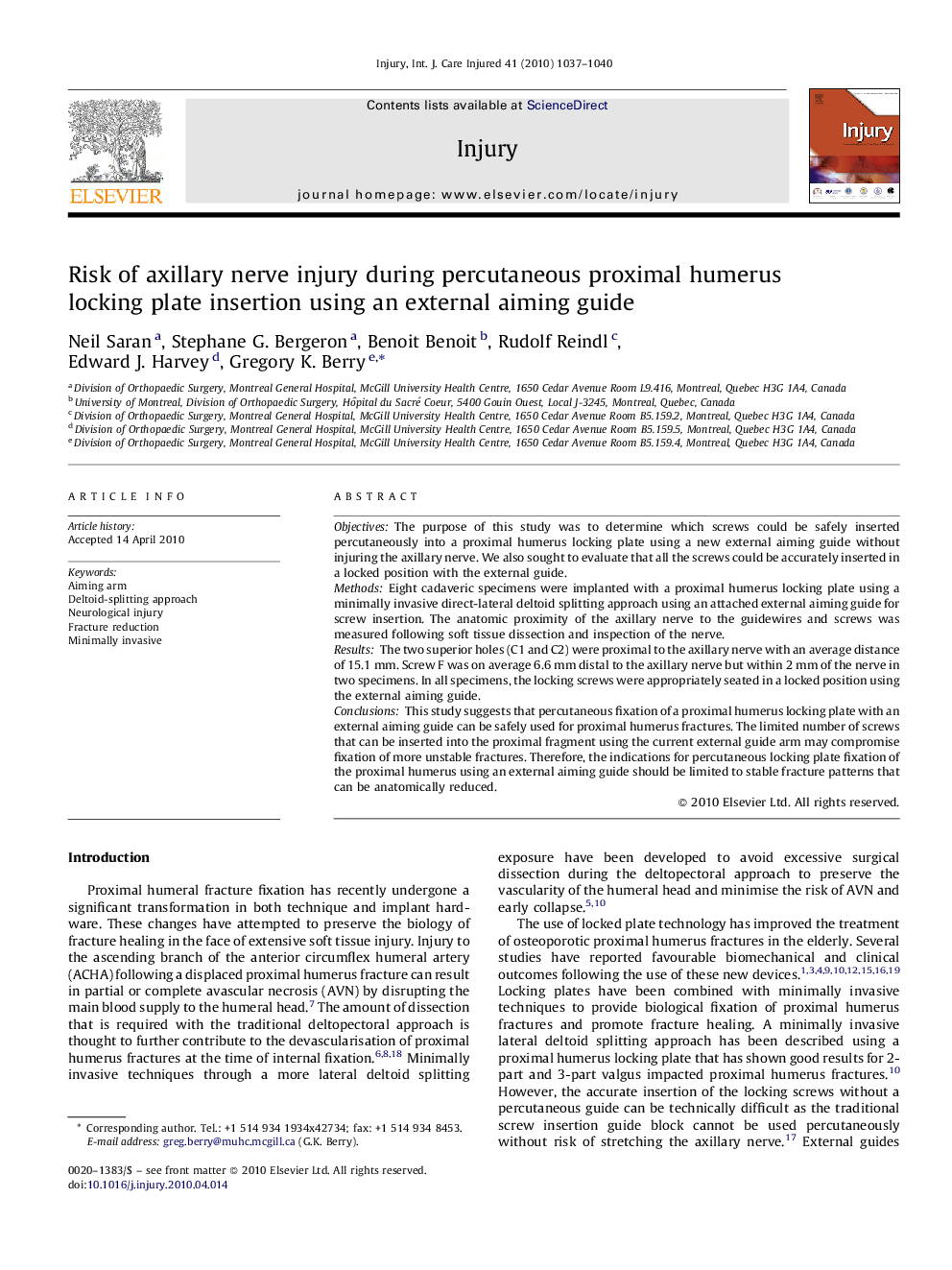| Article ID | Journal | Published Year | Pages | File Type |
|---|---|---|---|---|
| 3240020 | Injury | 2010 | 4 Pages |
ObjectivesThe purpose of this study was to determine which screws could be safely inserted percutaneously into a proximal humerus locking plate using a new external aiming guide without injuring the axillary nerve. We also sought to evaluate that all the screws could be accurately inserted in a locked position with the external guide.MethodsEight cadaveric specimens were implanted with a proximal humerus locking plate using a minimally invasive direct-lateral deltoid splitting approach using an attached external aiming guide for screw insertion. The anatomic proximity of the axillary nerve to the guidewires and screws was measured following soft tissue dissection and inspection of the nerve.ResultsThe two superior holes (C1 and C2) were proximal to the axillary nerve with an average distance of 15.1 mm. Screw F was on average 6.6 mm distal to the axillary nerve but within 2 mm of the nerve in two specimens. In all specimens, the locking screws were appropriately seated in a locked position using the external aiming guide.ConclusionsThis study suggests that percutaneous fixation of a proximal humerus locking plate with an external aiming guide can be safely used for proximal humerus fractures. The limited number of screws that can be inserted into the proximal fragment using the current external guide arm may compromise fixation of more unstable fractures. Therefore, the indications for percutaneous locking plate fixation of the proximal humerus using an external aiming guide should be limited to stable fracture patterns that can be anatomically reduced.
